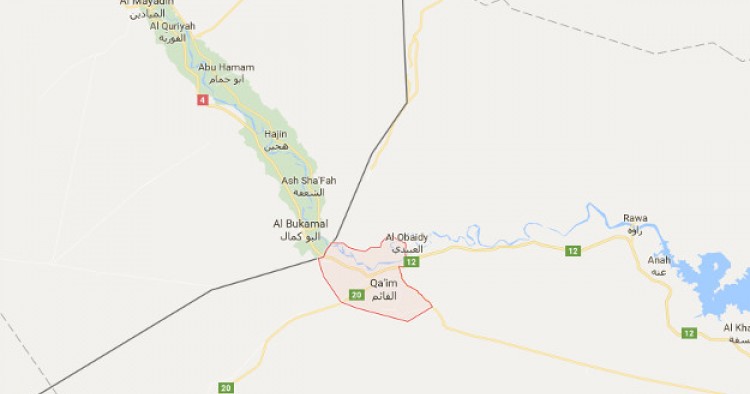The chief operational commander of Iraq’s Popular Mobilization Forces (P.M.F.) issued a statement yesterday outlining plans for the paramilitary forces and Iraqi troops to liberate the towns of Rawa and al-Qaim on the Euphrates River in western al-Anbar Province near the border with Syria. "We seek to lock down the entire Iraqi-Syrian border from north to south,” the statement said. In an interview with the Lebanese al-Mayadeen news outlet earlier today, P.M.F. spokesman Ahmad al-Assadi also said that the paramilitary forces in cooperation with Iraqi security forces have made significant territorial gains against Islamic State forces in western Anbar Province and will soon enter the border town of al-Qaim currently held by Islamic State militants. In addition, Kata’ib Hezbollah, an Iranian-sponsored unit in the P.M.F., also revealed that the group’s militiamen are taking part in the latest offensive in western Anbar.
Comment: The statements by P.M.F. leaders come as the Iraqi government has announced the launch of a military operation to recapture the last bastion of the Islamic State in the country. Iranian-backed Shiite P.M.F. groups appear to be playing a major role in the latest military operation near the Syrian border. According to the U.S.-led coalition fighting the Islamic State in the region, about 1,500 Islamic State fighters are stationed in the vicinity of al-Qaim. Several thousand others are believed to be on the other side of the border in Syria.
Both al-Qaim and Rawa are strategically important for the Baghdad government and the Islamic State, which uses the border crossing to smuggle weapons and fighters between the two countries.
The area is also significantly important for Iran and its regional proxy militia forces as the control of al-Qaim in Iraq and Abu Kamal border crossing on the Syrian side will allow Iran to complete its project to establish a land corridor to the Eastern Mediterranean.
The Syrian Army and Iranian-backed militia forces have made advances into the oil-rich Deir Ezzor Province in eastern Syria, but they are still have a long way to go before reaching Abu Kamal. Earlier this month, the commander of the all-Afghan militia unit called the Fatemiyoun Division told Tasnim News Agency, an Iranian outlet affiliated with the Islamic Revolution Guards Corps (I.R.G.C.), that the “resistance fighters” will advance toward Abu Kamal after capturing al-Mayadin in order to fulfill the promise of Iranian Quds Force Commander Qassem Soleimani.
By linking up its proxy forces along the Syrian-Iraqi border, Iran will have secured its strategic prize in the region. But the extensive presence of the Islamic State in Deir Ezzor on the one hand, and the advance of U.S.-backed rebels into the province from northeast Syria on the other, present a obstacle to the Iranian project.
The Middle East Institute (MEI) is an independent, non-partisan, non-for-profit, educational organization. It does not engage in advocacy and its scholars’ opinions are their own. MEI welcomes financial donations, but retains sole editorial control over its work and its publications reflect only the authors’ views. For a listing of MEI donors, please click here.













